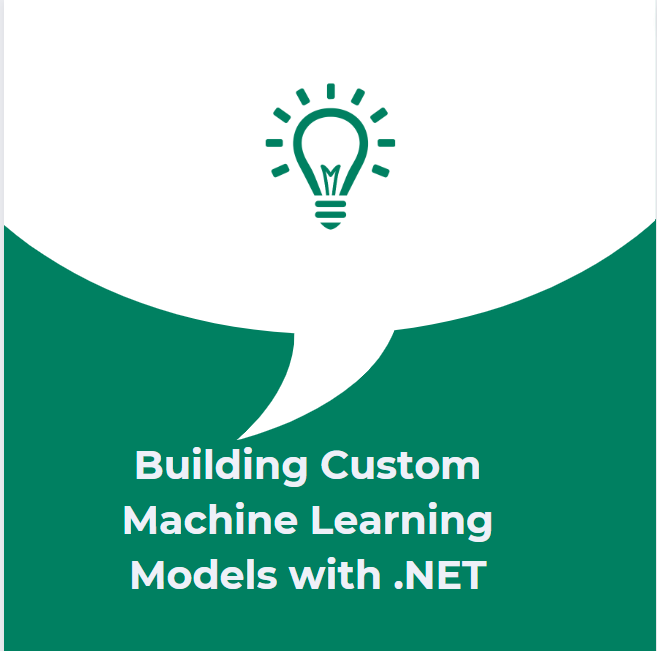
In the rapidly advancing world of technology, the convergence of .NET development services with machine learning is propelling innovation to new heights. This synergy empowers developers to create custom machine learning models tailored to specific business needs. In this article, we’ll explore the process of building custom machine learning models using .NET, highlighting the capabilities and benefits that this powerful combination brings to the table.
The Intersection of .NET Development Services and Machine Learning
Understanding Machine Learning in .NET
Machine learning, a subset of artificial intelligence, equips computers with the ability to learn and make decisions from data without explicit programming. In the realm of .NET, this capability is harnessed through libraries like ML.NET, an open-source framework provided by Microsoft. ML.NET empowers developers to integrate custom machine learning models directly into their .NET applications, providing a seamless experience for both development and deployment.
Leveraging .NET Development Services for Customization
The versatility of .NET development services complements the machine learning process in several crucial ways. With its extensive libraries, robust debugging tools, and efficient IDEs, .NET provides a solid foundation for developing, testing, and deploying custom machine learning models. This integration enables developers to harness the full potential of their data while leveraging the power of .NET.
Building Custom Machine Learning Models: A Step-by-Step Guide
1. Data Collection and Preparation
The foundation of any successful machine learning model lies in the quality and relevance of the data it’s trained on. Begin by identifying and collecting the data relevant to the problem you’re solving. Clean and preprocess the data to ensure it’s in a format that can be effectively used for training.
2. Choosing the Right Algorithm
Selecting the appropriate algorithm is pivotal in achieving accurate and meaningful results. ML.NET offers a wide range of algorithms, each designed to address specific types of problems. Whether it’s classification, regression, clustering, or anomaly detection, careful consideration of the problem at hand will guide your choice.
3. Feature Engineering
Feature engineering involves selecting and transforming the most relevant attributes (features) from your dataset. This process greatly influences the performance of your machine learning model. .NET’s extensive libraries provide a suite of tools for effective feature selection and transformation.
4. Model Training and Evaluation
Using the chosen algorithm and prepared data, train the model. This process involves exposing the model to the data, allowing it to learn and adjust its internal parameters. After training, evaluate the model’s performance using metrics relevant to your specific problem, such as accuracy, precision, recall, or others.
5. Integration with .NET Applications
Once you have a trained and evaluated model, seamlessly integrate it into your .NET application. This integration allows your application to leverage the insights and predictions generated by the custom machine learning model.
Benefits of Building Custom Machine Learning Models with .NET
1. Seamless Integration with Existing Applications
The ability to integrate custom machine learning models directly into .NET applications streamlines the deployment process. This seamless integration ensures that the model’s insights are readily available within the context of the application, enhancing user experience and decision-making.
2. Extensive Library Support
.NET development services come with a rich ecosystem of libraries and frameworks that augment the machine learning process. This extensive support system accelerates development, providing ready-to-use tools for tasks like data manipulation, visualization, and model evaluation.
3. Robust Debugging and Testing Capabilities
The .NET framework’s powerful debugging and testing tools facilitate the development of reliable and accurate machine learning models. This ensures that the model performs consistently and reliably in real-world scenarios.
4. Scalability and Performance Optimization
.NET’s scalability and performance optimization capabilities are invaluable when working with large datasets or resource-intensive machine learning models. This allows for the development of models that can handle the demands of enterprise-level applications.
Conclusion
The marriage of .NET development services with machine learning is a game-changer for businesses seeking to harness the power of data-driven decision-making. By building custom machine learning models with .NET, developers can create tailored solutions that address specific business challenges. This integration not only streamlines the development process but also ensures seamless integration with existing applications. As technology continues to evolve, the potential for innovation in this space is boundless, promising a future where custom machine learning models become an integral part of every .NET application.


